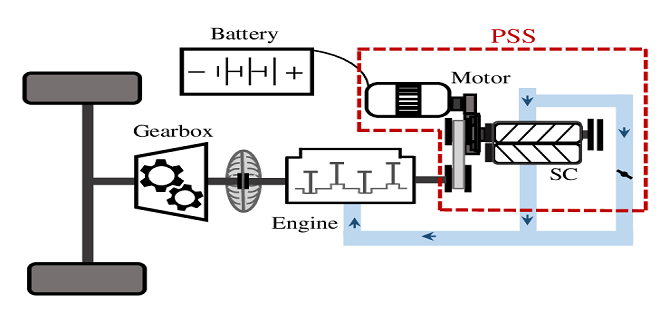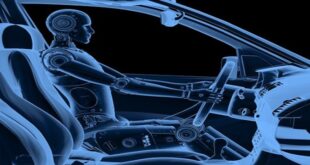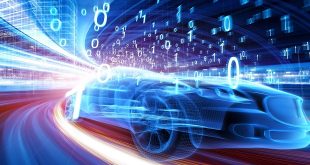Exhaust pipes carry what’s left of the exhaust gases through a muffler, which controls the noise of the escaping gases to the tailpipe and out of the vehicle. If it fails, you can get a ticket, probably for disturbing the peace! Besides keeping the noise down, the muffler also has an effect on the pressure required to pass the exhaust gases through it, which creates the “back pressure” that the engine requires to run efficiently and affects the temperature and therefore the efficiency of the catalytic converter.
The muffler
The next sections take a closer look at two emissions control devices that play a major part in cleaning up exhaust gases and have had a major effect on reducing air pollution.
The PCV valve
It was developed to deal with smog by further reducing the toxic substances in the exhaust gases before they can pollute the air. The catalytic converter is basically a cylinder filled with either little ceramic beads or a honeycomb structure coated with minute amounts of expensive metal catalysts that interact with the pollutants: Reduction catalysts (rhodium and palladium) turn the NOx (nitrogen oxide) emissions to oxygen and nitrogen, which exist in the air we breathe. Oxidation catalysts (palladium and platinum) turn carbon monoxide and hydrocarbon into harmless carbon dioxide and water.
The catalytic converter
Originally, the lead in gasoline fouled catalytic converters, rendering them less effective and eventually destroying them, so legislation was passed to remove lead from fuel. Because lead is toxic to humans and other animals, we’ve all benefited greatly from its removal from automotive fuel and its emissions.
Other emissions control devices
Other emissions control devices include an exhaust gas recirculation system (EGR). An EGR valve on the intake manifold allows a small percentage of the exhaust gases back into the intake manifold, which lowers the peak combustion temperature in the combustion chambers and results in lower NOx emissions.
Also, oxygen sensors tell the ECU about excess oxygen in the exhaust gases so that the ECU can correctly control the fuel/air mixture. Air injection systems and various other gizmos also help clean up the exhaust before it enters the air. Engineers are developing new ways to clean up and reduce automotive emissions every day.
All you need to know is that the parts and processes are there, and they’re working to keep you healthy. But the healthiest thing you can do is drive the most-efficient vehicle possible, as little as possible! To get more specific tells you about new.
Last word
diesel engines and fuels that not only burn clean but also can reduce the burden on overflowing garbage dumps. Chapter 10 covers a variety of hybrid and alternatively fueled vehicles that may inspire you to trade in Old Faithful for a 21st-century set of wheels.
 Jobsearchdone.com Top News Share Website
Jobsearchdone.com Top News Share Website




